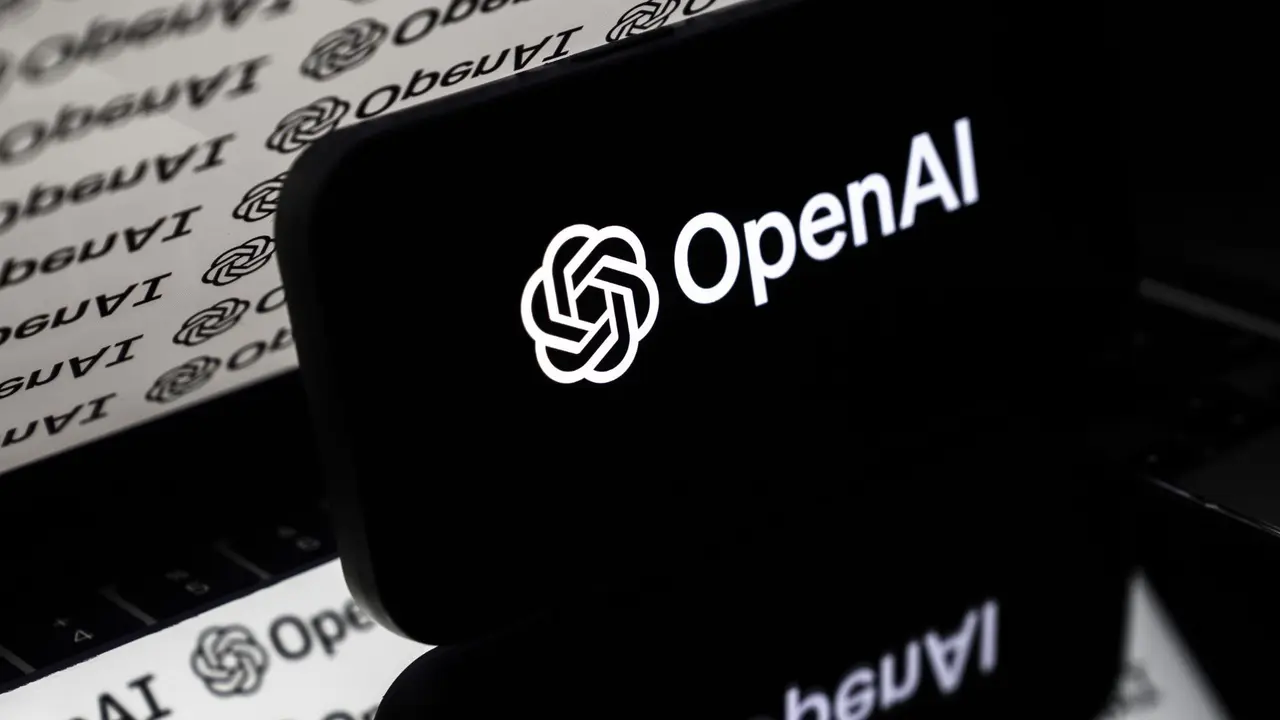Windsurf Launches SWE-1: AI Models Designed for Comprehensive Software Engineering
7 Sources
7 Sources
[1]
Vibe coding startup Windsurf launches in-house AI models | TechCrunch
On Thursday, Windsurf, a startup that develops popular AI tools for software engineers, announced the launch of its first family of AI software engineering models, or SWE-1 for short. The startup says it trained its new family of AI models -- SWE-1, SWE-1-lite, and SWE-1-mini -- to be optimized for the "entire software engineering process," not just coding. The launch of Windsurf's in-house AI models may come as a shock to some, given that OpenAI has reportedly closed a $3 billion deal to acquire Windsurf. However, this model launch suggests Windsurf is trying to expand beyond just developing applications to also developing the models that power them. According to Windsurf, SWE-1, the largest and most capable AI model of the bunch, performs competitively with Claude 3.5 Sonnet, GPT-4.1, and Gemini 2.5 Pro on internal programming benchmarks. However, SWE-1 appears to fall short of frontier AI models, such as Claude 3.7 Sonnet, on software engineering tasks. Windsurf says its SWE-1-lite and SWE-1-mini models will be available for all users on its platform, free or paid. Meanwhile, SWE-1 will only be available to paid users. Windsurf did not immediately announce pricing for its SWE-1 models but claims it's cheaper to serve than Claude 3.5 Sonnet. Windsurf is best-known for tools that allow software engineers to write and edit code through conversations with an AI chatbot, a practice known as "vibe coding." Other popular vibe coding startups include Cursor, the largest in the space, as well as Lovable. Most of these startups, including Windsurf, have traditionally relied on AI models from OpenAI, Anthropic, and Google to power their applications. In a video announcing the SWE models, comments made by Windsurf's Head of Research, Nicholas Moy, underscore Windsurf's newest efforts to differentiate its approach. "Today's frontier models are optimized for coding, and they've made massive strides over the last couple of years," says Moy, "But they're not enough for us [...] Coding is not software engineering." Windsurf notes in a blog post that while other models are good at writing code, they struggle to work between multiple surfaces -- as programmers often do -- such as terminals, IDEs, and the internet. The startup says SWE-1 was trained using a new data model and a "training recipe that encapsulates incomplete states, long-running tasks, and multiple surfaces." The startup describes SWE-1 as its "initial proof of concept," suggesting it may release more AI models in the future.
[2]
Software engineering-native AI models have arrived: What Windsurf's SWE-1 means for technical decision-makers
Join our daily and weekly newsletters for the latest updates and exclusive content on industry-leading AI coverage. Learn More To date, vibe coding platforms have largely relied on existing large language models (LLMs) to help write code. However, writing code is only one of many different tasks developers need to perform to build a full enterprise-grade production platform. Other tasks in the complete software engineering workflow require using different tools to help review, commit and maintain code over time. It's a challenge Windsurf (formerly Codeium) is taking on with a series of new frontier AI models it calls SWE-1 (software engineer 1) as part of the company's Wave 9 update. The news comes as Windsurf is reportedly in the midst of being acquired by AI leader OpenAI for as much as $3 billion. That deal has not yet formally closed, and Windsurf is not currently publicly commenting on the deal. SWE-1 is a family of frontier-class AI models specifically designed to accelerate the entire software engineering process. Unlike general-purpose AI models that have been adapted for coding tasks, the SWE-1 family was built to address the full spectrum of software engineering activities. The new models aim to support developers through multiple surfaces, incomplete work states and long-running tasks that characterize real-world software development. Available immediately to Windsurf users, SWE-1 marks the company's entry into frontier model development with performance competitive to established foundation models, but with a focus on software engineering workflows. "Our main goal here is to accelerate all software engineering by 99%," Anshul Ramachandran, head of product and strategy at Windsurf, told VentureBeat. Enterprise developers need more than just coding-capable models The core innovation behind SWE-1 is Windsurf's recognition that coding represents only a fraction of what software engineers actually do. This approach addresses a critical limitation in current AI coding LLMs. Many different models can be used today to write application code, including OpenAI's GPT-4.1, Anthropic Claude 3.7 and Google's Gemini 2.5 Pro I/O edition. Windsurf has a modular interface that can enable use of multiple different models. Ramachandran explained that Windsurf users have given the company feedback that existing coding models tend to do well with user guidance, but over time tend to miss things. This limitation stems from a fundamental difference in task structure. While code generation is often a single-shot task, real software engineering involves navigating multiple tools, working with incomplete code and maintaining context across long-running projects. The SWE-1 family: Purpose-built for different engineering tasks Rather than creating a one-size-fits-all solution, Windsurf has developed three specialized models: The SWE models were built through an extensive in-house training process focused specifically on software engineering tasks. Ramachandran said that the company used a new data model with sequential steps for training. Performance benchmarks: How SWE-1 compares While SWE-1 isn't positioned to replace foundation models from major labs, Windsurf claims it achieves frontier-class performance specifically for software engineering tasks. The company reports that it substantially outperforms mid-sized foundation models and open-weight models. However, Windsurf is careful not to oversell these initial results. "Even our benchmark shows it's not objectively better than all the other models," Ramachandran acknowledged. Instead, the goal is to position SWE-1 as the first step toward purpose-built models that will eventually surpass general-purpose ones for specific engineering tasks -- and potentially at a lower cost. The technical edge: Flow awareness and shared timelines What makes Windsurf's approach technically distinctive is its implementation of the flow awareness concept. The basic idea is that a flow of steps need to happen as part of enterprise development. Rather than just writing code for one specific step, flow awareness is about being aware of the broader context. Flow awareness is centered on creating a shared timeline of actions between humans and AI in software development. The core idea is to progressively transfer tasks from human to AI by understanding where AI can most effectively assist. This approach creates a continuous improvement loop for the models. "As we continue to improve the models, more of the steps in that shared timeline will be flipped from human to AI," said Ramachandran. "The AI will be able to do more things that the human had to do before because the AI wasn't right." What this means for technical decision-makers For enterprises building or maintaining software, SWE-1 represents an important evolution in AI-assisted development. Rather than treating AI coding assistants as simply autocomplete tools, this approach promises to accelerate the entire development lifecycle. The potential impact extends beyond just writing code more quickly. The recognition that application development is more involved will help mature the vibe coding paradigm to be more applicable for stable enterprise software development. While it's still early days for SWE-1, this move is important. If and when OpenAI completes the acquisition of Windsurf, the new models could become even more important as they intersect with the larger model research and development resources that will become available. Technical leaders should consider how much of their development workflow could benefit from AI assistance beyond mere code generation. Teams spending significant time on code reviews, debugging and managing technical debt might see more substantial benefits from tools like SWE-1 than those primarily focused on generating new code.
[3]
Windsurf Releases SWE-1 AI Model Family for Full Software Engineering Lifecycle | AIM
While SWE-1 marks the company's first entry into frontier model development, Windsurf plans to continue expanding its AI research and development. Windsurf has launched SWE-1, its first proprietary family of AI models focused on accelerating the full software engineering lifecycle. Unlike existing models that centre on code generation, SWE-1 is designed to support workflows across the entire development process, including incomplete projects and long-running tasks. The SWE-1 model family includes three purpose-built models for different stages of software development. SWE-1 is the full-scale version used for advanced reasoning and tool use. SWE-1-lite, a smaller variant that replaces Cascade Base, is now available to all users. SWE-1-mini is a lightweight model integrated into the Windsurf Tab, offering fast, passive code prediction. Each of these models is now available to both free and paid users of the Windsurf platform. "Writing code is only a fraction of what engineers do," said Varun Mohan, CEO and co-founder of Windsurf. "To truly accelerate software development by 99%, we had to move beyond 'coding-capable' models and build software engineering-native models. SWE-1 is our first step in that direction." The SWE-1 models operate based on a design principle Windsurf calls flow awareness, the idea that humans and AI share a single development timeline. This allows models to work in step with developers as they write, review, and debug code in the Windsurf Editor. "Flow awareness lets us see exactly where models succeed or fail, down to the individual decision point," said Anshul Ramachandran, a member of Windsurf's founding team. "That feedback loop is our competitive edge." According to Windsurf, real-time feedback from users is central to improving the models' effectiveness. SWE-1 is considered a foundational step in building this shared timeline and may serve as a proof of concept for future end-to-end software engineering automation. While SWE-1 marks the company's first entry into frontier model development, Windsurf plans to continue expanding its AI research and development. The company stated that future efforts will focus on scaling the SWE model family and growing the machine learning research team.Engineers interested in testing the new models can access them through the Windsurf Editor at windsurf.com.
[4]
Windsurf has launched homegrown AI models despite OpenAI deal
Windsurf, the startup best known for its AI coding assistant tools, has launched a new set of proprietary models aimed at redefining how AI supports software engineering. The newly introduced family includes three models: SWE-1, SWE-1-lite, and SWE-1-mini. Unlike traditional code-generation tools, these models are designed to support the entire software engineering process from end to end. The announcement signals a notable shift for Windsurf. Until now, the company had built its reputation on user-facing tools powered by models from OpenAI, Anthropic, and Google. By training its own foundation models, Windsurf is now positioning itself as a platform that controls both the interface and the intelligence behind it. This move comes amid reports that OpenAI has agreed to acquire Windsurf in a deal valued at 3 billion dollars, suggesting that Windsurf is asserting its roadmap independently regardless of the acquisition. At the center of the launch is SWE-1, the most powerful model in the lineup. According to internal benchmarks shared by Windsurf, SWE-1 delivers performance comparable to Claude 3.5 Sonnet, GPT-4.1, and Gemini 2.5 Pro. It still trails frontier models like Claude 3.7 Sonnet in certain tasks, but the company emphasizes that SWE-1 was trained with a different goal: to support long-term engineering workflows rather than just produce high-accuracy code completions. The lighter models, SWE-1-lite and SWE-1-mini, are designed for broader accessibility. Both versions will be available to all users on the platform, regardless of subscription status. SWE-1, on the other hand, will be exclusive to paid users. While pricing has not been disclosed, Windsurf claims SWE-1 is more cost-efficient to run than Claude 3.5 Sonnet, which could appeal to teams looking to scale AI-assisted development without inflating infrastructure costs. Windsurf's tools are part of the fast-growing "vibe coding" segment, where developers interact with AI chat interfaces to write, debug, and refactor code. Cursor and Lovable are among the other startups in this space. These platforms have historically depended on third-party models, but Windsurf's latest move suggests a new phase where control over the underlying model architecture becomes a strategic advantage. The company's Head of Research, Nicholas Moy, underscored this vision in a video introducing the SWE series. "Today's frontier models are optimized for coding, and they've made massive strides," he said. "But they're not enough for us. Coding is not software engineering." That distinction forms the core of Windsurf's thesis: software development is a layered, contextual task that requires models to operate across tools, environments, and long-term objectives. Windsurf says it built its models using a novel training approach that incorporates multi-surface workflows and incomplete development states. Rather than only training on final versions of code, SWE-1 has been exposed to real-world scenarios where developers switch between terminals, IDEs, and browsers, often mid-task. This gives the model a more grounded understanding of how software gets built in practice. The company describes this release as a first step. In a blog post, Windsurf calls SWE-1 a "proof of concept" and hints at future iterations. The launch represents a strategic foundation for what could become a broader platform play, potentially involving deeper integrations, custom tooling, and further model releases.
[5]
Windsurf Releases AI Models Claimed to Do More Than 'Just Writing Code'
Windsurf's SWE-1 is comparable to Claude 3.5 Sonnet in performance Windsurf, an artificial intelligence (AI) no-code or 'vibe coding' platform, released a series of AI models on Thursday. Dubbed SWE-1, these models are focused on complex software engineering tasks, and not just writing code. The series comprises SWE-1, SWE-1-lite, and SWE-1-mini, where each model is designed for specific use cases. The lite and mini versions are available to all Windsurf users, whereas the frontier SWE-1 model is only available to subscribers. The company has yet to reveal pricing for and availability for the frontier coding model. The California-based AI firm detailed the new series of AI models in a blog post. SWE-1 is designed to tackle the complex tasks and responsibilities of a human, and not just write and edit code. The company says that while coding models have improved, their scope has not increased significantly. Most models are still trained to produce code that compiles and passes unit tests, but that represents only a small part of what software engineers do. The company added that the next generation of coding models should be able to work across terminals, interpret user feedback, and handle tasks over a longer period. Windsurf claims that the SWE-1 series is a step in that direction. The frontier model is said to perform at the level of Claude 3.5 Sonnet and comes with features such as tool-calling and reasoning. Windsurf claimed that the AI model would be priced cheaper than the Anthropic model. On the other hand, the SWE-1-lite is a lightweight model which can perform everyday coding tasks. The company said it is available for unlimited use. Similarly, SWE-1-mini is a low-latency model which is best suited for real-time tasks. Both of them are available to all users, including those on the free tier. Windsurf said that SWE-1 is the company's first attempt at a frontier model that can be compared to a human software engineer. As a result, the benchmark scores of the model were not as high as the company expected. However, it now plans to develop the SWE family further.
[6]
New Windsurf SWE-1 Frontier AI Models Designed for Coding Now Available
Windsurf has announced the launch of SWE-1, a comprehensive suite of AI models designed to enhance the software engineering lifecycle. Unlike traditional AI tools that primarily focus on isolated tasks such as code generation, SWE-1 adopts a holistic approach aimed at improving efficiency, fostering collaboration, and streamlining development processes. By incorporating advanced technologies such as flow awareness, feedback loops, and generative AI, SWE-1 seeks to address the multifaceted challenges faced by developers in modern software engineering. SWE-1 is designed to support the entire software development lifecycle, from managing incomplete tasks to optimizing long-term projects. While many existing AI tools concentrate on specific functions like debugging or code generation, SWE-1 takes a broader perspective, offering tools that assist with testing, project management, and workflow optimization. This integrated approach enables developers to reduce technical debt, improve productivity, and accelerate project timelines. The suite is engineered to integrate seamlessly into existing development environments, making sure compatibility with established workflows. A standout feature, flow awareness, allows the AI to operate in sync with human developers by maintaining a shared understanding of project objectives and timelines. This context-aware functionality not only enhances productivity but also creates a more intuitive and efficient development experience. The SWE-1 suite comprises three distinct models, each tailored to meet specific user needs and workflows. These models are designed to provide flexibility and scalability, making sure developers can select the most appropriate tool for their projects: - SWE-1: The flagship model, optimized for advanced reasoning and complex tool usage. This full-size model is designed for intricate tasks and is available exclusively to paid users, offering robust capabilities for demanding projects. - SWE-1-lite: A versatile, mid-tier model that balances performance with accessibility. Replacing the Cascade Base model, SWE-1-lite is available to both free and paid users, making it suitable for a wide range of applications. - SWE-1-mini: A lightweight model focused on fast, passive code predictions. This model is ideal for users seeking quick insights and is accessible to all, regardless of subscription status. Each model in the SWE-1 family is purpose-built to address specific challenges in software engineering, making sure developers have access to tools that align with the scope and complexity of their projects. The capabilities of SWE-1 are underpinned by a suite of advanced technologies that distinguish it from conventional AI models. These technologies are designed to enhance the model's adaptability, precision, and overall utility in software engineering: - Flow Awareness: This feature enables SWE-1 to adapt to the context of ongoing tasks, fostering seamless collaboration between human developers and AI. By maintaining a shared understanding of project goals and timelines, flow awareness ensures that the AI provides timely and relevant support. - Feedback Loops: Iterative feedback mechanisms allow SWE-1 to continuously refine its performance. These loops enable the model to learn from its interactions, improving accuracy and efficiency over time. - Generative AI: Using state-of-the-art generative AI techniques, SWE-1 can handle complex tasks such as code generation, debugging, and testing. This enables developers to address challenges with greater precision and confidence. - Machine Learning: Built on a foundation of advanced machine learning algorithms, SWE-1 is capable of adapting to diverse use cases, making it a versatile tool for developers across industries. These technologies collectively enable SWE-1 to deliver a comprehensive solution for modern software engineering challenges, setting it apart from traditional AI tools. SWE-1 is designed to address a wide range of applications within the software engineering domain. Its features and capabilities offer several key benefits to developers and organizations: - Streamlined Workflows: By integrating seamlessly into existing development environments, SWE-1 helps teams optimize their workflows and reduce inefficiencies. - Enhanced Collaboration: The suite fosters better collaboration between team members and AI, making sure that all stakeholders remain aligned on project objectives. - Reduced Technical Debt: By assisting with debugging, testing, and other critical tasks, SWE-1 helps developers minimize technical debt and maintain high-quality codebases. - Scalability: With its tiered model offerings, SWE-1 provides solutions for projects of varying sizes and complexities, from quick code predictions to advanced reasoning tasks. These benefits make SWE-1 a valuable tool for developers seeking to improve productivity, reduce project timelines, and deliver high-quality software. Windsurf has outlined ambitious plans for the continued development of the SWE-1 suite. The company is investing heavily in machine learning research and expanding its team of experts to further enhance the capabilities of its AI models. Future iterations of the SWE-1 family are expected to introduce even more advanced features, solidifying Windsurf's position as a leader in generative AI-powered tools for software engineering. In addition to technological advancements, Windsurf remains committed to addressing the evolving needs of developers. By focusing on reducing technical debt and allowing high-quality development at scale, the company aims to empower teams to deliver better software faster. This commitment underscores Windsurf's dedication to innovation and its mission to redefine the software development lifecycle. Windsurf is a leading platform in the field of generative AI, specializing in tools designed to transform software engineering. By combining advanced AI technologies with a deep understanding of developer workflows, Windsurf provides solutions that enhance efficiency, collaboration, and quality. The launch of SWE-1 represents a significant milestone in the company's efforts to innovate and improve the software development process. SWE-1 represents a pivotal advancement in the application of AI to software engineering. With its advanced features, tailored models, and commitment to continuous improvement, Windsurf's latest offering has the potential to reshape how developers approach their work. By allowing more efficient and collaborative workflows, SWE-1 paves the way for a future where software engineering is faster, smarter, and more intuitive. This suite of tools underscores Windsurf's dedication to empowering developers and advancing the field of software engineering through innovation and expertise. Here is a selection of other guides from our extensive library of content you may find of interest on Windsurf :
[7]
New Windsurf SWE-1 AI Models Fully Tested : Smarter, Faster, Affordable Coding?
What if the future of coding wasn't just faster but smarter, more accessible, and cost-efficient? Windsurf's latest innovation, the SWE-1 AI models, promises to redefine how developers approach their craft. Designed to balance performance optimization with affordability, these models aim to tackle coding challenges head-on, offering lightning-fast execution times and specialized capabilities for tasks like user interface development. Yet, as with any bold leap forward, the journey is not without its hurdles. Early tests reveal both exciting breakthroughs and critical limitations, sparking a broader conversation about the evolving role of AI in software development. GosuCoder shows how SWE-1 and its lighter counterpart, SWE-1 Light, stack up against competitors and whether they deliver on their ambitious claims. From their strengths in code generation to their struggles with tool reliability, these models present a fascinating case study in innovation meeting real-world complexity. What makes them stand out? Where do they fall short? And most importantly, what do these developments mean for the future of coding? As we delve deeper, you'll uncover not just the technical details but also the broader implications of Windsurf's latest venture -- a story of potential, progress, and the challenges that come with reshaping an industry. The SWE-1 and SWE-1 Light models excel in generating new code and handling user interface tasks, making them valuable tools for developers working on fresh projects or interface-heavy workflows. When benchmarked against advanced models like Claude 3.5 Sonnet, SWE-1 demonstrates competitive performance, particularly in terms of speed and cost efficiency. Its ability to deliver results faster than many of its counterparts makes it an attractive choice for workflows requiring quick turnaround times. SWE-1 Light, while less robust, has proven effective in specific coding scenarios, successfully passing several custom unit tests. Despite these strengths, both models face notable challenges. SWE-1 struggles with tool-calling reliability, occasionally failing to execute tasks as intended. Additionally, both models exhibit inconsistent performance, with high variability in evaluation results. These fluctuations can undermine their reliability, especially in complex or high-stakes coding environments. Addressing these issues will be critical for making sure consistent outputs across diverse use cases. Windsurf's AI models bring several key advantages to the table, positioning them as noteworthy contenders in the AI coding landscape. Their strengths include: However, these models also reveal significant weaknesses that limit their broader applicability: These limitations underscore the models' early-stage development and highlight the need for ongoing improvements to address critical gaps in functionality. While their strengths suggest potential, their weaknesses must be resolved to ensure they meet the demands of professional developers. Here are additional guides from our expansive article library that you may find useful on AI coding tools. As part of their early-stage rollout, SWE-1 and SWE-1 Light are currently offered for free, a strategic move by Windsurf to gather valuable user feedback and performance data. This approach reflects the company's commitment to creating cost-efficient, high-performing AI tools with minimal computational overhead. By prioritizing accessibility, Windsurf aims to provide widespread access to advanced coding assistance for a broader audience. User feedback has been mixed. Testers have praised the models' potential, particularly their ability to deliver high-quality outputs in specific tasks such as generating new code or designing user interfaces. However, frustrations have emerged over inconsistencies, tool failures, and difficulties in handling existing codebases. These recurring pain points highlight the need for further optimization and refinement. Despite these challenges, there is optimism about the models' future, as their strengths suggest significant room for growth and improvement. Windsurf's development of proprietary AI models positions the company as a competitive player in the rapidly evolving AI coding tools market. The SWE-1 and SWE-1 Light models showcase the potential for innovation with limited resources, offering a glimpse into the possibilities of cost-efficient AI solutions that cater to developers' needs. To achieve widespread adoption, Windsurf must address the models' current shortcomings, particularly their inconsistent performance and challenges with existing code. By using user feedback, collecting more data, and iteratively refining the models, Windsurf has the opportunity to transform SWE-1 and SWE-1 Light into reliable tools that meet the diverse needs of developers. This iterative approach will be essential for building trust and making sure the models can handle a wide range of coding tasks with precision and reliability. As the AI market continues to expand, Windsurf's success will depend on its ability to balance innovation with practical usability. Delivering tools that not only perform well but also address real-world challenges will be key to standing out in a crowded field. For now, SWE-1 and SWE-1 Light represent a promising foundation, offering a starting point for future advancements in AI-driven coding assistance. With continued development and refinement, these models could play a pivotal role in shaping the future of coding workflows.
Share
Share
Copy Link
Windsurf, a vibe coding startup, has released its first family of AI models called SWE-1, designed to support the entire software engineering process beyond just coding. This move marks Windsurf's entry into frontier model development, despite an ongoing acquisition deal with OpenAI.
Windsurf Introduces SWE-1: A New Frontier in AI-Assisted Software Engineering
Windsurf, a startup known for its AI-powered coding tools, has launched its first proprietary family of AI models called SWE-1 (Software Engineer 1). This release marks a significant shift in the company's strategy and the broader landscape of AI-assisted software development
1
.The SWE-1 Family: Beyond Code Generation

Source: AIM
The SWE-1 family consists of three models:
- SWE-1: The flagship model, designed for advanced reasoning and tool use.
- SWE-1-lite: A smaller variant replacing Cascade Base, available to all users.
- SWE-1-mini: A lightweight model integrated into the Windsurf Tab for fast, passive code prediction
3
.
Unlike traditional AI coding assistants that focus primarily on code generation, SWE-1 is engineered to support the entire software development lifecycle. This includes handling incomplete projects, long-running tasks, and working across multiple surfaces such as terminals, IDEs, and browsers
2
.Performance and Accessibility
According to Windsurf's internal benchmarks, SWE-1 performs competitively with established models like Claude 3.5 Sonnet, GPT-4.1, and Gemini 2.5 Pro on programming tasks. However, it still trails behind frontier models such as Claude 3.7 Sonnet in certain areas
1
.In terms of accessibility, SWE-1-lite and SWE-1-mini will be available to all Windsurf users, including those on free plans. The more powerful SWE-1 model will be exclusive to paid subscribers, with Windsurf claiming it's more cost-efficient to run than comparable models like Claude 3.5 Sonnet
4
.The Concept of Flow Awareness
A key innovation in SWE-1 is what Windsurf calls "flow awareness." This design principle aims to create a shared timeline of actions between humans and AI in software development. The goal is to progressively transfer tasks from human to AI by understanding where AI can most effectively assist
2
.Strategic Implications
This launch represents a strategic pivot for Windsurf, which has traditionally relied on third-party models from companies like OpenAI, Anthropic, and Google. By developing its own models, Windsurf is positioning itself as a more vertically integrated platform in the competitive "vibe coding" market
4
.Related Stories
The OpenAI Acquisition Context
Interestingly, this announcement comes amid reports that OpenAI has agreed to acquire Windsurf for $3 billion. The launch of SWE-1 suggests that Windsurf is continuing to pursue its independent roadmap, potentially strengthening its position in the ongoing acquisition talks
1
.Future Directions
Windsurf describes SWE-1 as a "proof of concept" and hints at future iterations. The company plans to continue expanding its AI research and development, focusing on scaling the SWE model family and growing its machine learning research team
3
4
.References
Summarized by
Navi
[2]
Related Stories
Windsurf AI's Wave 2 Update: Revolutionizing Coding with Advanced AI Features
20 Jan 2025•Technology

OpenAI's $3 Billion Acquisition of Windsurf: A Strategic Move in the AI-Powered Coding Race
06 May 2025•Business and Economy

Google Snags Windsurf's Top Talent, Cognition Acquires Company in AI Coding Frenzy
12 Jul 2025•Business and Economy

Recent Highlights
1
AI Chatbots Sway Voters More Effectively Than Traditional Political Ads, New Studies Reveal
Science and Research

2
Google AI glasses set to launch in 2026 with Gemini and Android XR across multiple partners
Technology

3
EU Launches Antitrust Probe Into Google's AI Training Practices and Content Usage
Policy and Regulation





